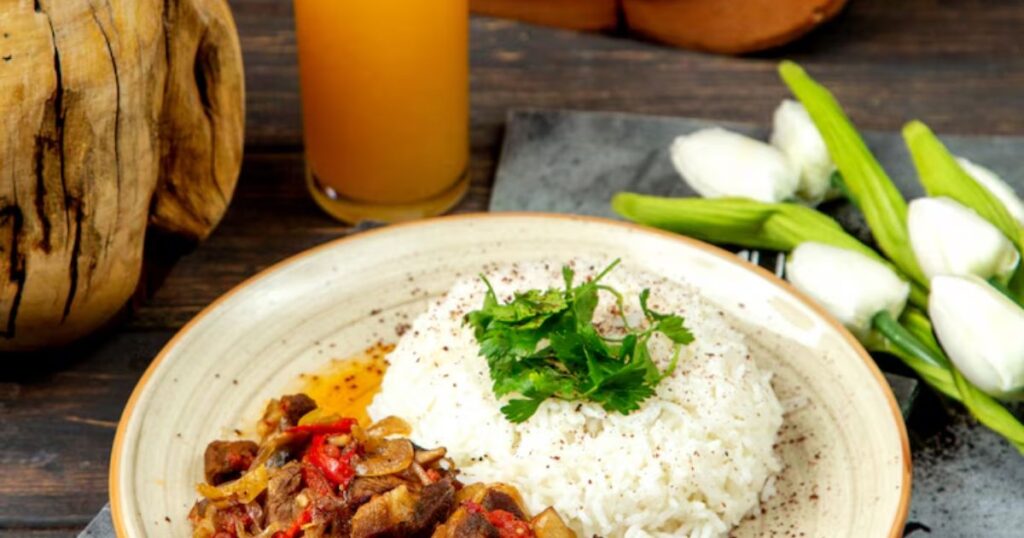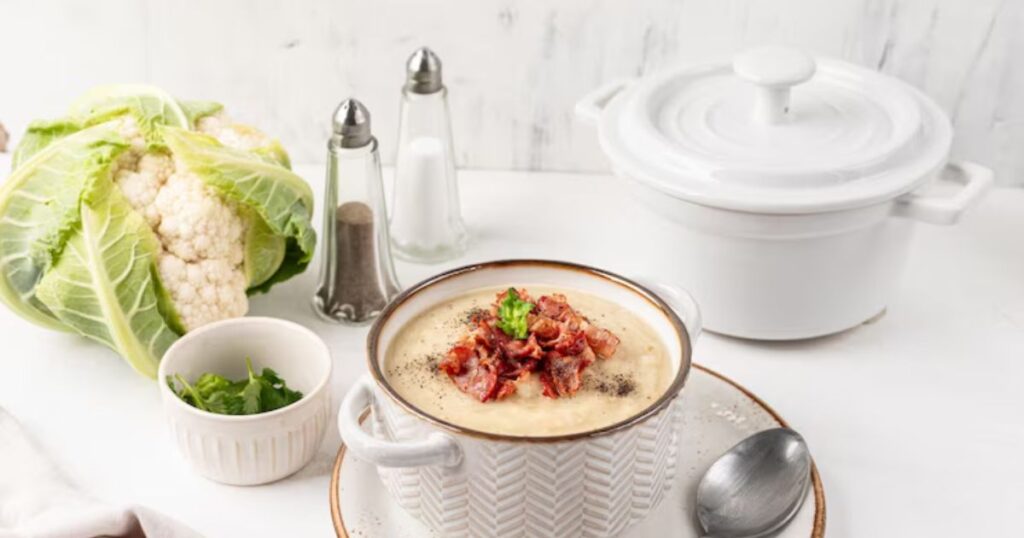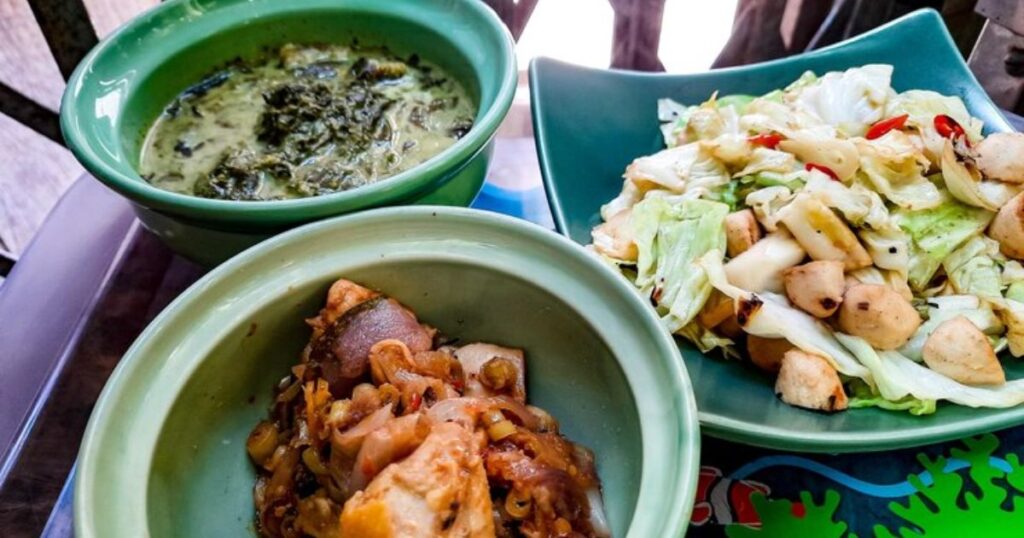Filipino Comfort Food 101 (2025): Heartwarming Recipes to Start Your Culinary Journey
Ever wondered why certain foods evoke such strong memories and emotions? For many Filipino comfort food goes beyond mere sustenance; it serves as a bridge to childhood and cherished moments spent with loved ones.
This article delves into the world of Filipino comfort food, showcasing dishes that are steeped in tradition and flavor. Join us as we uncover the stories behind these delightful meals and learn how they can warm your heart and soul.
Filipino Comfort Food: Rice

In the Philippines, rice transcends mere sustenance; it symbolizes prosperity and wealth, woven into the fabric of daily life. From breakfast to dinner, this versatile grain is not just a side but the heart of every meal. Steamed white rice serves as the canvas for bold flavors, complementing Filipino dishes adorned with rich sauces.
Dishes like sinangag, or garlic fried rice, elevate leftover rice into a breakfast favorite, often enjoyed alongside silog meals that combine various salty proteins with a perfectly fried egg.
Imagine starting your day with Spamsilog or tapsilog, where the savory elements meld harmoniously with the comforting embrace of plain rice. As midday approaches, a steaming bowl of arroz caldo or chicken porridge offers nourishment and warmth, spiced with ginger and a dash of patis for that quintessential Filipino comfort food experience.
Even at dinner, rice remains a steadfast companion, accompanying everything from hearty stews to vibrant vegetable dishes. The adaptability of rice, whether served in sweets or savory plates, ensures it remains a beloved staple that connects generations and cultures across the archipelago.
Filipino Comfort Food: Soups and Stews

The world of soups and stews is a tapestry of flavors, each bowl telling a story steeped in tradition and innovation. In Filipino cuisine, for instance, “sabaw” is not just a comforting broth; it’s a celebration of local ingredients and culinary heritage.
Take “sinigang,” a sour soup that dances with the tang of tamarind, guava, or calamansi, often brimming with vibrant vegetables like long beans, radish, and eggplant. The addition of pork or shrimp elevates its savory profile, while the ever-present bay leaf and garlic lend an aromatic depth that warms the soul.
On the other hand, stews such as “kare-kare” bring an entirely different experience to the table. This rich dish, made with oxtail or tripe, is lovingly cooked with peanut butter and served with a side of bagoong alamang for that umami kick.
The interplay of textures from tender meat, creamy sauce, and crunchy vegetables like bitter melon and squash creates an unforgettable meal. Moreover, the versatility of stews allows for creative adaptations; imagine a coconut milk-infused stew with sweet potatoes and pineapple, offering a tropical twist on traditional flavors.
Whether served with rice or paired with puto, each bite reveals layers of culture and community, making soups and stews not just food, but a heartfelt expression of life itself.
Filipino Comfort Food: Pulutan

Pulutan is more than just a side dish; it’s the heartbeat of Filipino comfort food inuman sessions, where every bite enhances laughter and camaraderie. Imagine sinking your teeth into crispy chicharron dipped in spiced vinegar, the crunch perfectly complementing the lively conversations and clinking glasses.
Or consider the beloved ukoy, those delightful shrimp fritters made with sweet potato, cabbage, and scallions, offering a satisfying mix of textures and flavors that elevate any gathering. Each plate tells a story, whether it’s the savory sisig crafted from pork ears, cheeks, and snout, or the rich lechon kawali, its crackling skin calling for a dip in soy sauce with calamansi.
Diving deeper into pulutan culture reveals a treasure trove of regional variations. For instance, kinilaw showcases the freshness of raw fish marinated in vinegar and citrus juice, while kilawin embraces grilled meat like goat or beef, often enriched with coconut milk for a creamy finish.
The vibrant colors of fresh vegetables like carrots and bean sprouts add a refreshing contrast to these hearty dishes. And let’s not forget the hangover remedy: a fried egg atop your plate of lechon belly, seasoned with garlic and black peppercorns, making it a perfect companion for those late-night revelries.
Each dish, whether it’s a simple bowl of pork liver sauce or an elaborate spread featuring sweet mangoes and bay leaves, invites diners to indulge in a sensory experience that goes beyond mere sustenance—it’s a celebration of life itself.
Filipino Comfort Fiesta Food

Fiestas in Filipino comfort food culture are vibrant celebrations bursting with color, music, and, most importantly, food that showcases the warmth and hospitality of the community. At the heart of these festivities is lechon, a succulent spit-roasted pig that becomes the centerpiece of any gathering.
Its crispy skin and tender meat are often paired with banana ketchup or a zesty sweet and sour sauce, making it an irresistible indulgence. Alongside lechon, dishes like embutido—ground pork rolled with raisins, hard-boiled eggs, ham, and sausage—offer a delightful fusion of flavors that highlight the creativity inherent in Filipino cuisine.
No fiesta is complete without a generous serving of pancit, symbolizing prosperity and long life. Variants like pancit bihon feature delicate rice vermicelli tossed with chicken, shrimp, carrots, and cabbage, all harmonized by savory soy sauce and fish sauce.
Meanwhile, pancit palabok dazzles with its rich annatto sauce, topped with crushed chicharron and scallions for an added crunch. As guests savor these dishes, they also enjoy lumpiang Shanghai—crispy egg rolls filled with a tasty pork and vegetable mixture—proving to be a party favorite that disappears quickly from platters.
Each bite during these celebrations not only delights the palate but also encapsulates the essence of Filipino gatherings where food binds people together in joyous revelry.
Sweets: Filipino Comfort Food

In the vibrant tapestry of Filipino cuisine, sweets hold a cherished place that transcends mere indulgence; they embody culture and community. Native sweets like kakanin—rice cakes such as biko, bibingka, and puto—are often served during festive occasions but can also be enjoyed anytime as a delightful breakfast or snack.
The creamy richness of latik, derived from coconut milk, adds a unique depth to these treats, making them not just desserts but a celebration of local ingredients. Pairing these traditional delights with modern favorites like leche flan, made with egg yolks and topped with a sweet caramel sauce, creates a harmonious blend of flavors.
The influence of Spanish and American sweets has further enriched the Filipino dessert landscape. Think of halo-halo, where layers of shaved ice meet a medley of ingredients like ube ice cream, sweetened fruits, and even salted duck egg for an unexpected twist.
This colorful concoction exemplifies how diverse influences can come together to create something uniquely Filipino. Alternatively, a simple fruit salad enhanced with table cream and condensed milk can evoke nostalgia, reminding many of family gatherings and summer afternoons spent enjoying the refreshing taste of buko pandan—a dessert that showcases young coconut and fragrant pandan jelly. In every bite of these sweets lies a story, waiting to be savored and shared.
Also Read: The Best Homemade Brownie Recipe Ever Your Go-To In (2025)
Conclusion
To wrap up, Filipino comfort food serves as a delicious reminder of the country’s vibrant heritage and communal spirit. These dishes are more than mere sustenance; they are a source of joy and connection that bring people together.
Whether it’s the hearty sinigang or the delectable lumpiang shanghai, each bite transports you to cherished memories and familial bonds. By exploring and enjoying these traditional recipes, we not only celebrate Filipino culture but also create new memories around the dinner table.
So why not invite friends and family over for a feast of Filipino comfort food and share in the love that comes with every meal?







